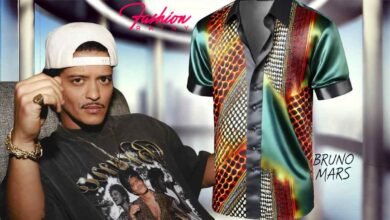Mastering Warm vs Cool Colors: A Fashion Guide to Identify and Use Them

Understanding the difference between warm and cool colors can significantly enhance your fashion sense, helping you create chic and elegant outfits that highlight your best features. This guide will help you identify and use warm vs cool colors effectively, transforming your personal style and boosting your wardrobe confidence.
What Are Warm vs Cool Colors?
Warm colors, such as reds, oranges, and yellows, evoke warmth and energy. Cool colors, including blues, greens, and purples, are associated with calmness and serenity. Understanding these distinctions can help you choose colors that complement your skin tone and personal style.
Cool Blue vs Warm Blue
- Cool Blue: Think of icy, pastel blues or navy. These shades have a calming effect and are perfect for creating a serene, sophisticated look.
- Warm Blue: Warm blues have a hint of green or teal, evoking a tropical, lively vibe. These shades are great for adding energy and vibrancy to your outfits.
Cool Gray vs Warm Gray
- Cool Gray: Often tinged with blue, cool gray is sleek and modern, ideal for creating minimalist, elegant outfits.
- Warm Gray: With undertones of brown or beige, warm gray feels cozy and inviting, perfect for relaxed, casual looks.
Identifying Your Undertone: Cool Skin Tones vs Warm Skin Tones
Your skin tone plays a crucial role in determining which colors look best on you. Here’s how to identify whether you have cool or warm undertones.
Cool Toned Skin vs Warm Toned Skin
- Cool Toned Skin: If your skin has a pink, red, or blue undertone, you fall into the cool category. Cool skin tones look great in silver jewelry and colors like blue, green, and purple.
- Warm Toned Skin: If your skin has a yellow, golden, or olive undertone, you have warm skin. Gold jewelry and colors like red, orange, yellow, and warm green complement warm skin tones beautifully.
Cool vs Warm Colors: Finding Your Style
Identifying whether you prefer warm or cool colors can help streamline your wardrobe and enhance your personal style. Here’s how to find your clothing style using these color principles.
Cool Outfits
Cool colors are perfect for creating sophisticated, elegant outfits. Incorporate shades like navy, emerald, and lavender into your wardrobe for a polished look. Pairing cool colors with neutral tones like gray or white can also create chic, timeless ensembles.
Warm Outfits
Warm colors are vibrant and full of energy. Red, orange, yellow, and earthy tones like brown and olive are great for making a bold fashion statement. Warm colors are perfect for creating eye-catching outfits that stand out in a crowd.
Personal Style: Elegant and Fashionable Outfits
Understanding the balance between warm and cool colors can help you create elegant, fashionable outfits that reflect your personal style.
Chic Outfits
Chic outfits often blend cool and neutral tones for a modern, sophisticated look. Think of a sleek navy dress paired with silver accessories or a cool gray blazer over a white blouse.
Elegant Outfits
Elegant outfits can incorporate warm tones for a rich, luxurious feel. Consider a deep red dress with gold jewelry or a warm beige coat with a cream scarf for a classic, elegant look.
Outfit Help: Finding Your Personal Style
Discovering your personal style is an adventure in self-expression. Use these tips to help identify the colors and outfits that make you feel your best.
Finding Your Clothing Style
Experiment with different colors and styles to see what resonates with you. Notice how various hues affect your mood and enhance your skin’s natural undertones. Over time, you’ll develop a sense of which colors and styles reflect your personality and enhance your appearance.
Outfit Tips
- Mix and Match: Don’t be afraid to mix warm and cool colors. This can create dynamic, interesting outfits.
- Accessorize: Use accessories to add pops of color to your outfits. A bright scarf or bold necklace can transform a neutral outfit.
- Seasonal Palettes: Consider the season when choosing your colors. Warm, earthy tones are great for fall, while cool, pastel shades are perfect for spring.
See also read: Black Tie Black Dress: Timeless Fashion for Formal Events
Conclusion
Mastering the art of warm vs cool colors can elevate your fashion game, helping you create outfits that enhance your natural beauty and reflect your personal style. By understanding your undertones and choosing colors that complement them, you’ll build a versatile wardrobe that makes you feel confident and stylish.




